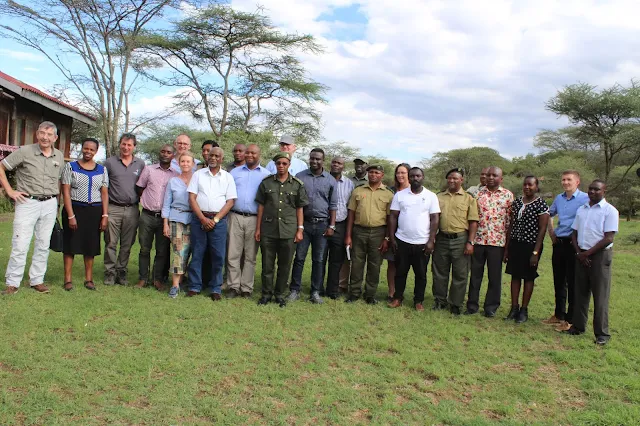A stakeholder’s workshop convened at Seronera in Serengeti
National Park (SENAPA) on recently resolved that drilling of several water
boreholes will be the best way to supply water to SENAPA facilities (including
ranger posts).
The stakeholders also suggested investment in rain water
harvesting technology in the park, which hosts numerous ranger posts and other
tourist facilities.
The aim is to stop the constant human interference in the rivers
used by wild animals at the park.
Thus, the new study is meant to develop an Integrated Water
Management Programme (IWMP) for the park.
SENAPA Chief Park Warden Senior Assistant Conservation Commissioner, Massana Mwishawa, said that conservation and protection of rivers used by wildlife should always be given top priority.
“We must have a strategic plan that ensures that the use of water
does not affect the ecology of Serengeti and water flow within the
ecosystem,” Mwishawa said.
The study recommended several options, but the stakeholders
preferred the drilling of boreholes and investment in rain water
harvesting.
The World Wide Fund for Nature (WWF) said the idea to have IWMP
will help to conserve and protect the park for many more years.
Mr Kessy, a water science expert at WWF Mara River Basin Office
said: “We, as WWF, see taking of ground water for human consumption in the park
as the best option.”
Mara River, which is shared by Tanzania and Kenya, is one of the
major sources of water for wildlife. This includes the great annual wildebeest
migration within the Serengeti- Masai Mara ecosystem.
“Having water boreholes will mean that water rivers will only be
used for the wildlife,” Mr. Kessy added.
Water is reportedly becoming a precious resource in Tanzania’s
world-famous park, which attracts thousands of tourists from all over the
world.
Besides wildebeest migration, the park is blessed with a variety
of beautiful animals, such as giraffes, lions, leopards, elephants, buffalos
and zebras.
Thus, the development of IWMP seeks to ensure that the Serengeti
ecosystem does not face a shortage of water for wildlife and human use.
The plan is funded by the German government, through KfW
Development Bank.
KfW Senior Project Manager, Dr Christian Ruck, commented that the
study has come up with clear options that are not costly.Among other things, it
has established available water sources, users and the existing gaps. The water
options preferred are part of the solutions on the existing gaps.
Researchers from CESI, a Germany firm entrusted with conducting
the study, told the stakeholders that the good news is that there is still
enough water and rains in Serengeti.
The firm is now expected to conduct a detailed analysis on the
preferred water options after the latest deliberations.
Mr Nuhu Daniel said that another similar stakeholders workshop is
set to be held early next year, according to the Serengeti Ecosystem
Conservation and Development Project Coordinator at SENAPA.
“We need to ensure that there is enough water for wildlife and tourists, and to ensure sustainability of Serengeti for another 60 years and beyond,” Mr Nuhu said.
Serengeti remains Tanzania’s top tourist attraction.
In June this year, Serengeti was voted the best park on the
African continent for the year 2019 by World Travel Awards (WTA) .














No comments:
Post a Comment